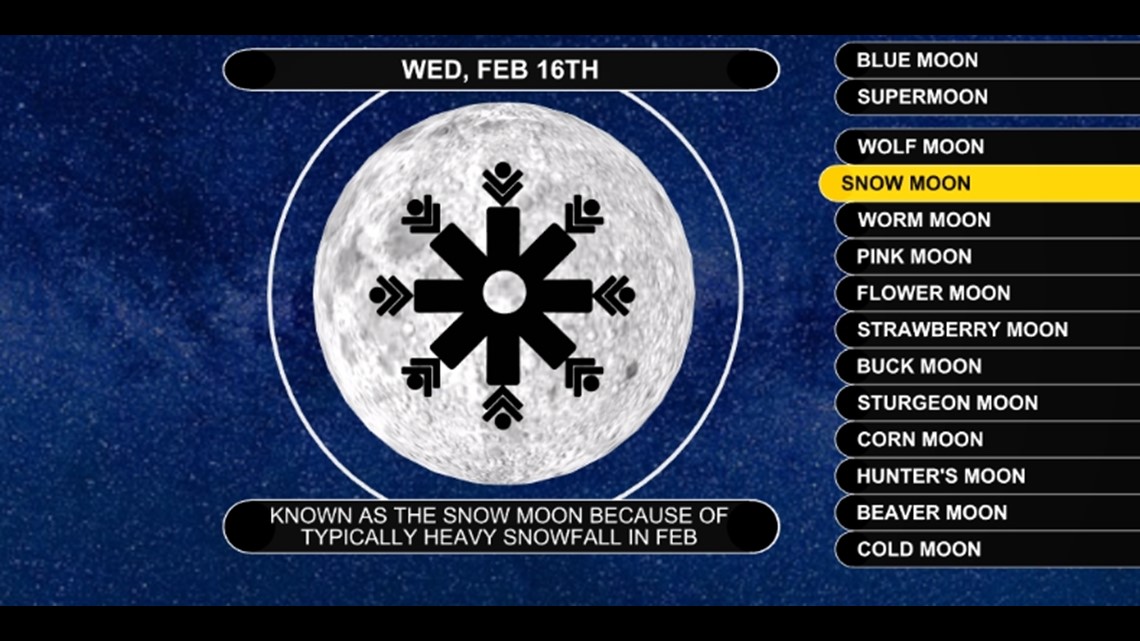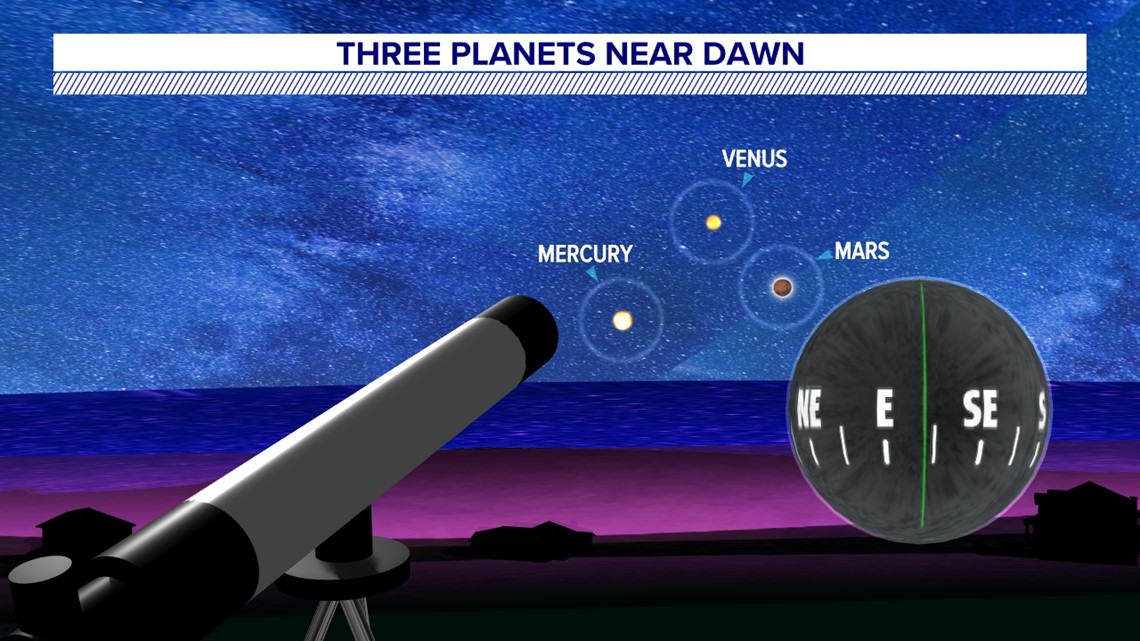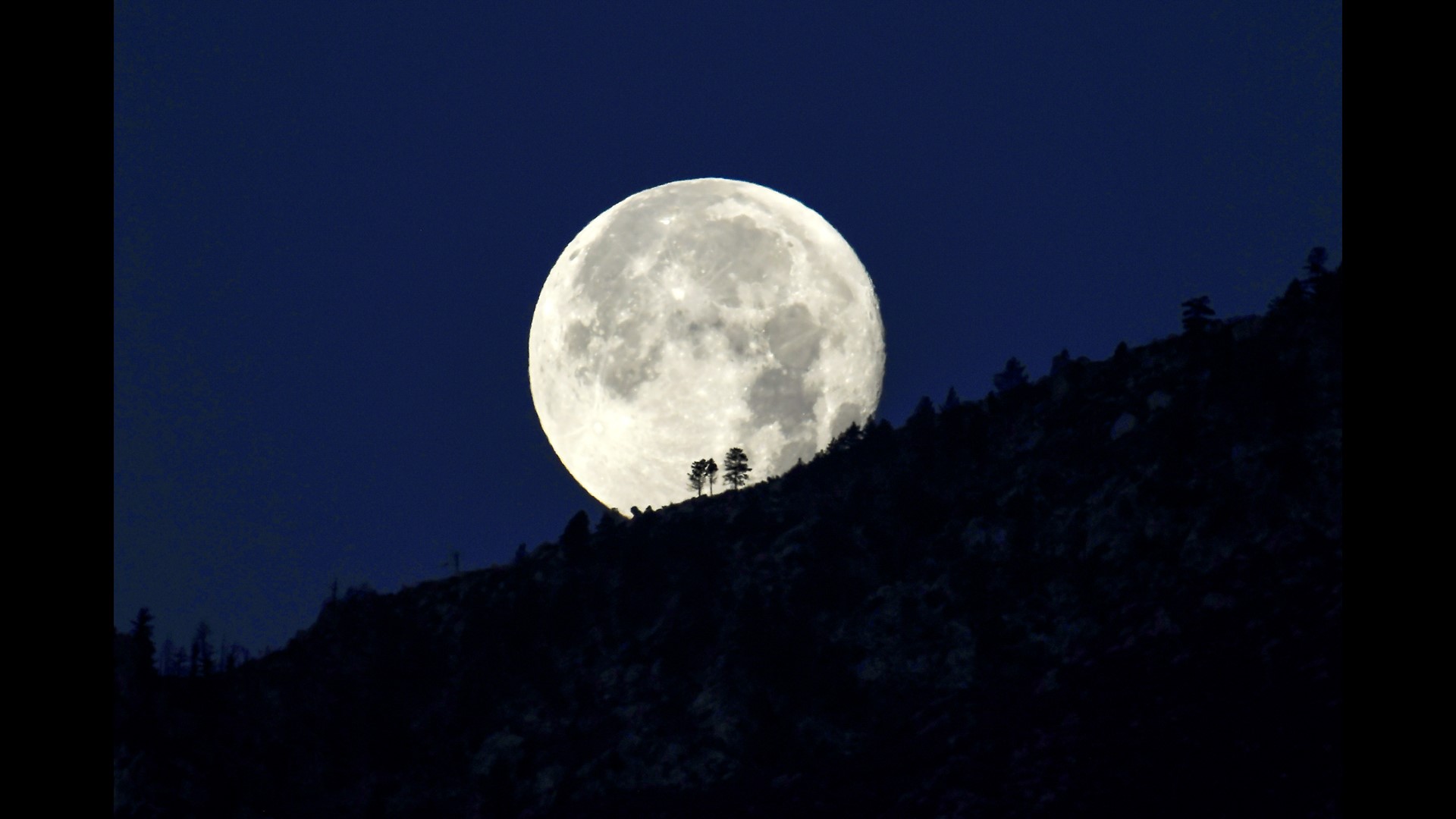Long winter nights during the shortest month of the year normally bring cold and snowy weather to many parts of the Northern Hemisphere. However, even during the coldest and darkest days, Mother Nature sometimes throws us a bone and puts on a little bit of a show.
On Tuesday evening the February full moon, also known as the Snow Moon, will be visible. The Snow Moon will be at its fullest at 11:57 a.m. Wednesday morning, meaning you won’t be able to see it. Thus, the best viewing will be Tuesday night into early Wednesday morning. Here’s the best part: the weather is going to cooperate!


Although a few clouds are expected this evening, the forecast features partly to mostly clear skies and cold temperatures. Layers are a must if you plan on going outside to check out the sky.
Why is Tuesday night's phenomenon called the “Snow Moon”? Well, to start out, each month’s full moon has been given a variety of different nicknames based on the time of year when it happens. The origins of the nicknames, for the most part, can be traced back hundreds of years to colonial Americans settling in North America.


As explained by the Old Farmer's Almanac, the full moon that we see in February is called the Snow Moon because there is normally very heavy snowfall in February. However, there are also other names for February’s full moon. Some other names include the Hunger Moon, the Bone Moon and the Storm Moon.
The Snow Moon will rise in the eastern sky this evening, but people who step outside starting early tomorrow might be able to see some of Earth’s neighbors!
If you start watching the sky tomorrow morning in the direction of the sunrise, you’ll see all of the rocky major planets in our solar system.
According to NASA, Venus will be at its brightest for the year Wednesday morning. It will rise with Mars at around 4 a.m. and will be visible until sunrise. Fun fact about Venus: it is actually the brightest of all planets in the solar system because of the highly reflective clouds that encompass it.
As stated previously, Mars and Mercury will also be visible. Just to the south and east of Venus is Mars. If you gaze to the south and west, you will be able to see Mercury!


If you are able to check out the Snow Moon and our celestial neighbors, snap a picture and make sure to share using the Near Me feature on the FOX43 app!

